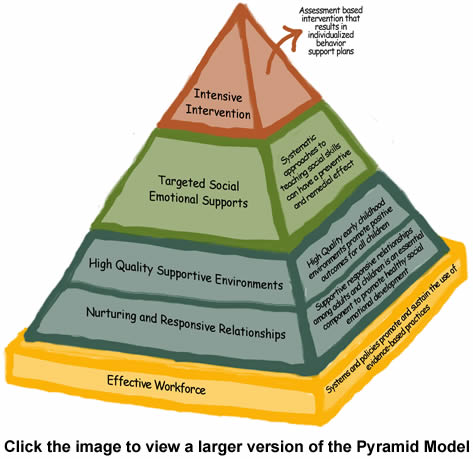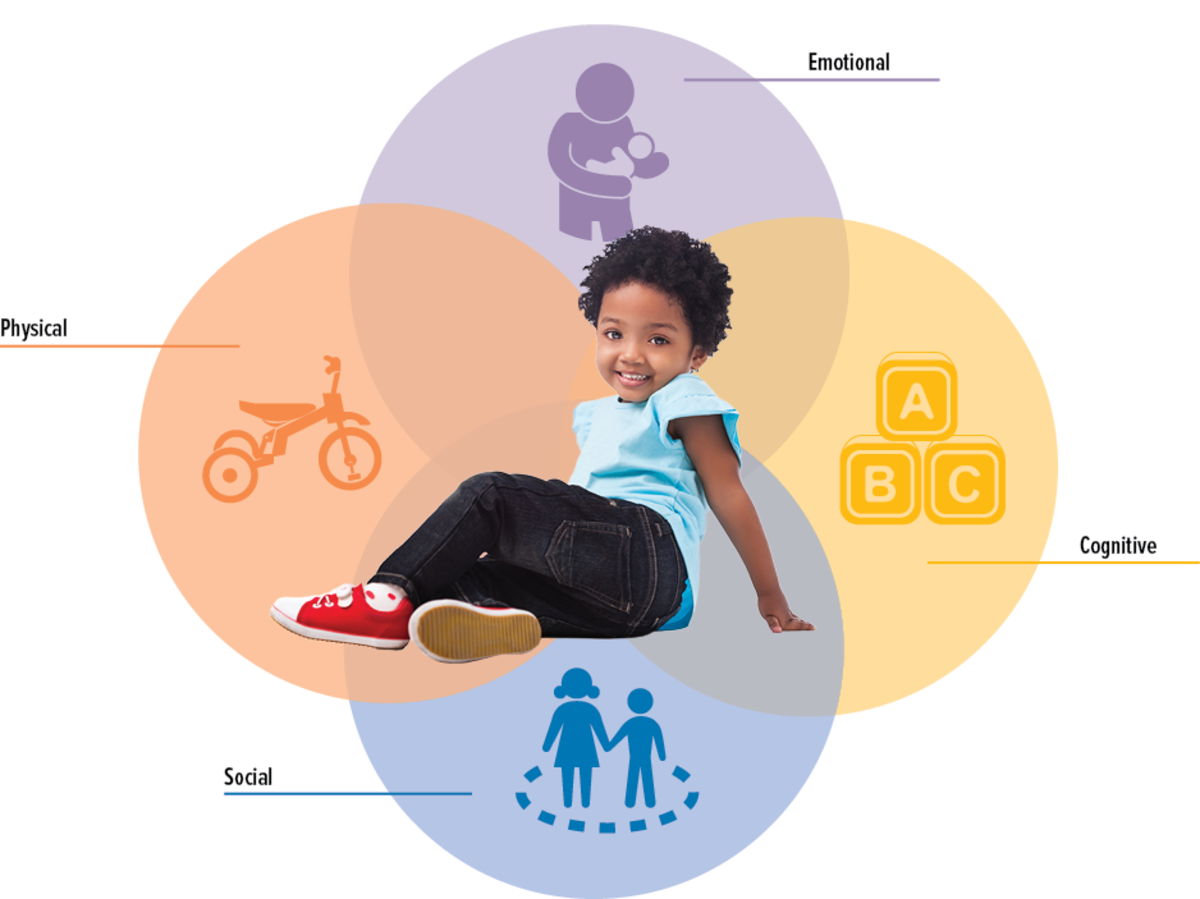The Benefits of Early Childhood Stimulation in the Home.....Part 1
Social Emotional Interventions

Benefits of Early Childhood Interactions
Copyright 2008, Jennifer Tyler
The stimulation of early childhood cognitive abilities provides many benefits to everyone involved. Parents and children can both benefit from enriching experiences in the early years. Many people believe that parents hold the key to providing their child with a solid foundation for intellectual pursuit. The literature (Diamond & Hopson, 1998, Bruer, 1999, & Levine, 2002) that is out there suggests that parents who provide enriching experiences to their children are the parents who have few problems later on in life. Parents who engage in activities such as reading are giving their child the gift that will last a lifetime. Aside from the fact that a stimulating environment provides for a bond with a parent, a stimulating environment does so much more. The benefits of providing stimulation to a child are endless. It is essential for parents to be aware of the benefits of providing enriching experiences reaps.
A child who is subjected to an environment where various experiences are provided is also a child who is more likely to do better in school and in life. Parents who read to their children when they are younger are boosting their child’s ability to understand language (Bruer, 1999, Diamond & Hopson, 1998). A child who has a good understanding of language is one who is more successful in school (Peterson, 1994 & Kurdek, 2000). Children who obtain this important tool before entering school are more likely to be successful in school as a result of this. This is one of the benefits that an early childhood experience can provide. Children who have been read to come to school with the ability to understand and interpret the language that they will encounter throughout their school years. Additional literature (The Standard Times, 1998) has suggested that a brain that has higher quality synapses is able to process information with ease and with less energy, thus a child who is faster at mental processing is a child who is more successful at learning new concepts.
Parents also need to be aware that there are other benefits of providing a stimulating environment. Children who are provided with a nurturing, warm environment reap the benefits of emotional and psychological success (Federal Government, 2002, Diamond & Hopson, 1998, & Early Childhood Care and Development). This is often an area where many children lose out on, as they have had environments where little stimulation was provided. Later on in life this results in a child who is unable to effectively deal with the emotional stressors of everyday life. Children require nurturing from parents in order to be successful. Traditionally, enriched environments provide all the tools a child needs to be successful in life. According to Diamond & Hopson (1998), "Emotional security may be the number one target for enrichment in infants and toddlers…" (p.133). Others (Early Childhood Care and Devlopment, Federal Government, 2002 & Kurdek, 2000) suggest that children who receive consistent nurturing are those who also develop healthier relationships with others.
Finally, parental stimulation provides an opportunity for growth within the child and parent. Parents who take an active interest in what their child learns are parents who have children who are more committed to the learning process (Levine, 2002). This alone allows a special bond between the parent and child to form. Parents and children can learn together to create a love for learning. When children and parents interact on this level it is opening the window of opportunity for learning (Levine, 2002). The connections that are formed during this time will those connections that will become stronger and remain so throughout adulthood (Federal Government, 2002). Evidence has shown that "kids thrive when they connect with both- intellectual affinities plus recreational pursuits and talents" (Levine, p. 301).
Impact of Parental Relations with Their Child and Its Effect on School Outcomes
There are many children who enter school without the necessary tools to do well. In some instances, children who enter school are subjected to stimulating experiences for the first time in their life. The fact remains that some children receive little preparation for the challenges that school presents. According to the National Association for the Education of Young Children (1997), those children who receive consistent nurturing are the students whose attendance and performance is far better. Additionally, NAEYC (1997) suggests that these children also exhibit a decrease in problems within school in the future. This indicates that children who have an enriching environment prior to entering school are at an advantage educationally over those who do not. Further studies (Henry, et al., 2000; Ramey & Ramey, 1994; Bradley, Burchinal, & Casey, 2001) imply that children who receive early intervention appear to be less aggressive within school environment. Studies of children from poorer socioeconomic backgrounds were conducted to determine if children who received stimulation via other means were more successful in school (Ramey & Ramey, 1994; Bennett, et. al, 2002 ; Bradley, Burchinal, & Casey, 2001). Results of these studies suggest that early intervention plays a significant role in providing enriching experiences in order for success to occur in school. One particular study focused on children who were three years old and who were from a home where parental stimulation rarely occurred (NAEYC, 1997, & Ramey & Ramey,1994). The High/Scope Perry preschool study followed these children from the start of the project at age three until the time the children were 27 years of age. The researchers found that by the time the children were 17 they demonstrated higher levels of literacy than the non program group. Additionally, the children who participated in this program also demonstrated improved preparedness for school in general (NAEYC, 1997).
Further research suggests that early intervention techniques raise IQ scores in children who participate in the programs (Ramey & Ramey, 1994; Raine, Reynolds, Venables, & Mednick, 2002). In this study, children from the Abecedarian project were followed to determine later success. The children were tracked to age 12. Results of the study indicated that early intervention brought forth decreases in failing grades and higher IQ scores. Many people believe that early intervention techniques such as these are the key to preparing a child to succeed in school. Traditionally, the parent would be responsible for doing so, however, the focus is to enable all students to succeed in school. Kurdek & Sinclair (2000) state that school readiness results in later academic success. If a child is prepared via parental stimulation than a child will be more apt to develop a love for learning throughout his schooling. Some of the early intervention techniques or projects suggest that this trend may not continue beyond grade school(Levine, 2002; Diamond & Hopson, 1998). This is where the parent comes in. The literature suggests (Levine, 2002) that parents need to be involved on some level in order for the greatest chance for success (Bradley, et. al, 2002).
Parental Interactions and How They Lead to Less Problems Later On
It is evident that parents who are more involved in their child’s life tend to experience less problems with their child in the later years. There have been programs specifically designed to intervene before it is too late. Such programs are geared at children who are at risk for failure and for problems with the legal system. Several decades ago an initiative to intervene with families from the lower socio-economic backgrounds began. This initiative, entitled Head Start, was created out of a need for programs that intervened with high risk children (Diamond & Hopson, 1998). Follow up studies of the successes of the program were conducted to determine the rate of success. The results indicated that the goal of lowering problem behaviors and increasing school success has indeed worked. Children who went through the program were said to have lower dropout rates, lower instances of teen pregnancy, and a decrease in juvenile related crimes (Diamond & Hopson, 1998). Since the enactment of programs like this, the Federal Government has supported initiatives aimed at early intervention (Federal Government, 2002). The belief is that by targeting the problem before it begins, we will experience fewer problems later on. At the same time, money will be saved by halting problems so early in a child’s life (Federal Government, 2002). The fact remains, however, many children and adolescents who commit crimes are placed in the hands of the juvenile justice system (Juvenile Justice Bulletin, 2000 ). With the current situation looking so dim more children will require early intervention services in order to be more successful in life (Juvenile Justice Bulletin, 2000).
Other studies (Jefferis, et al, 2002; Bradley, Burchinal, & Casey, 2001; Bennett, Bendersky, & Lewis, 2002; & Kemp & Center, 2000) indicate that children who are neglected or abused in any way are more likely to be at risk for dysfunctional development. When a caregiver neglects a child, his needs are not being met. As a result, dysfunctional behavior follows. Jefferis, Power & Hertzman (2002) conducted a study to determine the effects of neglect and maltreatment on a child’s development. They concluded that youth who had been maltreated in childhood were more at risk for offending or engaging in criminal behaviors. Jefferis, et. al (2002 ) state that neglect and abuse leads to delinquency and drug use later on in life. Unfortunately, these problems become the problems of society by the time the child is an adolescent. It is at this point that intervention becomes more difficult. Research (Bennett, et. al, 2002; Bradley, et. Al, 2001; & Kemp & Center, 2000) indicates that interventions which are aimed at decreasing environmental risk factors are proven to have a positive effect on the development on intelligence. However, in order for this to be effective, it must be instituted when the child is young. Ideally, the best time to start is before a child enters school. This is when the best chance of success occurs.








